-
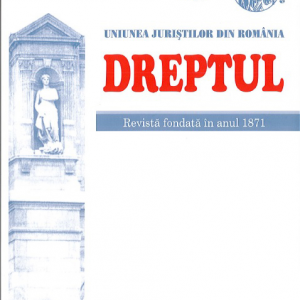 Cloud Computing is considered one of the most significant advances in information technology. Specialists agree that in a matter of a few years, almost all data will be in the Cloud. The field of digital forensics has grown rapidly over the last decade due to the rise of the Internet associated crimes and different frauds. Cloud forensics is the process of identifying, preserving, analyzing and presenting digital evidence in a manner that is legally acceptable. Traditional computer forensics consists in collecting data where the system is located. Cloud forensics is difficult because there are challenges with data location, multi-tenant hosting, synchronization problems and techniques for data segregation. In this paper we focus on the different stages of a Cloud Computing forensic search. For each phase of the Cloud forensic process, we have included a list of challenges and analysis of their possible solutions. Our research indicates that some problems are technical and others are legal, however the biggest challenges are not technical but legal.
Cloud Computing is considered one of the most significant advances in information technology. Specialists agree that in a matter of a few years, almost all data will be in the Cloud. The field of digital forensics has grown rapidly over the last decade due to the rise of the Internet associated crimes and different frauds. Cloud forensics is the process of identifying, preserving, analyzing and presenting digital evidence in a manner that is legally acceptable. Traditional computer forensics consists in collecting data where the system is located. Cloud forensics is difficult because there are challenges with data location, multi-tenant hosting, synchronization problems and techniques for data segregation. In this paper we focus on the different stages of a Cloud Computing forensic search. For each phase of the Cloud forensic process, we have included a list of challenges and analysis of their possible solutions. Our research indicates that some problems are technical and others are legal, however the biggest challenges are not technical but legal. -
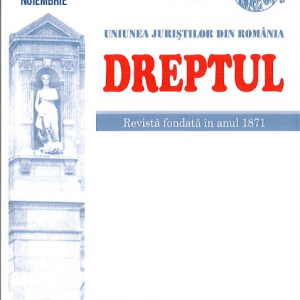 The author, making a (comparative) analysis between the regulation of voluntary intervention – principal and accessory – in the new Civil Procedure Code (published on 15 July 2010, but not yet in force), and that of art. 49–56 of the current Code, emphasizes that the essential difference between them is that, in the new Code, the application for voluntary intervention (principal or accessory) is admissible only in a “trial that is judged between the original parties”. Afterwards, examining the consequences of this situation, other discussions are also formulated regarding: the period within which the application for accessory intervention may be filed, as well as the regulations in the new Civil Procedure Code regarding the remedies against the rulings issued by courts of law in relation to the admissibility – mainly – of the application for intervention.
The author, making a (comparative) analysis between the regulation of voluntary intervention – principal and accessory – in the new Civil Procedure Code (published on 15 July 2010, but not yet in force), and that of art. 49–56 of the current Code, emphasizes that the essential difference between them is that, in the new Code, the application for voluntary intervention (principal or accessory) is admissible only in a “trial that is judged between the original parties”. Afterwards, examining the consequences of this situation, other discussions are also formulated regarding: the period within which the application for accessory intervention may be filed, as well as the regulations in the new Civil Procedure Code regarding the remedies against the rulings issued by courts of law in relation to the admissibility – mainly – of the application for intervention. -
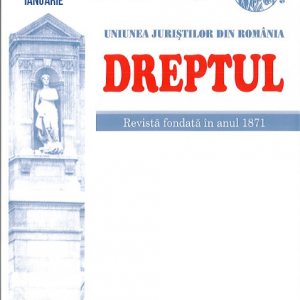 In this study the authors focus on the necessity of considering the criminal ks degree of social danger in the individualization of penalty, given that the same penalty, identical as type and amount, does not generate the same effects for all criminals on whom it is applied. Concurrently, the authors highlight and conduct an ample research of the elements de facto that are used for the assessment of a criminal ks degree of social danger. Therefore, in order to comprehend the criminal ks degree of social danger, the following should be assessed: health condition (predominantly the psycho-physical condition), the criminal ks biological structure and mental characteristics, the entire social environment, the criminal ks behavior before perpetration of the crime, the criminal and legal circumstances of the criminal (convict, recidivist, prosecuted for other felonies, rehabilitated, amnestied, pardoned etc.), behavior after perpetration of the crime and during the criminal lawsuit, the level of education, as well as age. The following personal circumstances of individualization should also be included: the criminal ks capacity (officer, army enlisted, magistrate, mother etc.), civil status (married, single, widowed etc.), the relationship with the victim (close relative, relative, cohabitant, spouse, friend, enemy etc.) and any other information that might contribute to the individualization of the criminal ks individuality (for instance, lifestyle, reputation, social merits etc.).
In this study the authors focus on the necessity of considering the criminal ks degree of social danger in the individualization of penalty, given that the same penalty, identical as type and amount, does not generate the same effects for all criminals on whom it is applied. Concurrently, the authors highlight and conduct an ample research of the elements de facto that are used for the assessment of a criminal ks degree of social danger. Therefore, in order to comprehend the criminal ks degree of social danger, the following should be assessed: health condition (predominantly the psycho-physical condition), the criminal ks biological structure and mental characteristics, the entire social environment, the criminal ks behavior before perpetration of the crime, the criminal and legal circumstances of the criminal (convict, recidivist, prosecuted for other felonies, rehabilitated, amnestied, pardoned etc.), behavior after perpetration of the crime and during the criminal lawsuit, the level of education, as well as age. The following personal circumstances of individualization should also be included: the criminal ks capacity (officer, army enlisted, magistrate, mother etc.), civil status (married, single, widowed etc.), the relationship with the victim (close relative, relative, cohabitant, spouse, friend, enemy etc.) and any other information that might contribute to the individualization of the criminal ks individuality (for instance, lifestyle, reputation, social merits etc.). -
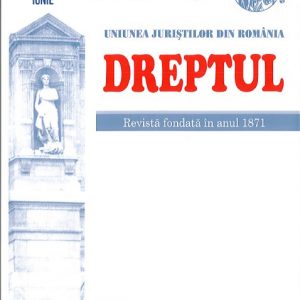 Respecting equality of rights, as well as obligation of non-discrimination, assumes taking in consideration the treatment that the law provides to those to whom it applies during the period in which its regulations are in force, legal treatment that cannot be different. This paper presents a very serious problem to be debated, for the resolution of which the solution consists in the analysis of the constitutionality and/or deficiencies of the law in relation to Article 3 of Law No 76/2012 for the implementation of Law No 134/2010 on the Civil Procedure Code, in particular in the situation of the Court being subject to time limitation in a suit in respect to Article 46 (1) of Law No 10/2001 regarding the legal status of buildings abusively appropriated between 6 March 1945–22 December 1989 (by which the suspensions can last indefinitely without becoming outdated, in the regulation of the old Civil Procedure Code). Further to be verified if the principle of non-retroactivity of civil procedure law – referring to the civil action being subject to time limitation in a suit – is compatible with Article 6 of the ECHR Convention that guarantees the right to a fair trial, and if individuals who are judged under the old law are discriminated against in relation to those who are judged under the rule of the new law and to which the privilege special time limitation in a suit within 10 years applies.
Respecting equality of rights, as well as obligation of non-discrimination, assumes taking in consideration the treatment that the law provides to those to whom it applies during the period in which its regulations are in force, legal treatment that cannot be different. This paper presents a very serious problem to be debated, for the resolution of which the solution consists in the analysis of the constitutionality and/or deficiencies of the law in relation to Article 3 of Law No 76/2012 for the implementation of Law No 134/2010 on the Civil Procedure Code, in particular in the situation of the Court being subject to time limitation in a suit in respect to Article 46 (1) of Law No 10/2001 regarding the legal status of buildings abusively appropriated between 6 March 1945–22 December 1989 (by which the suspensions can last indefinitely without becoming outdated, in the regulation of the old Civil Procedure Code). Further to be verified if the principle of non-retroactivity of civil procedure law – referring to the civil action being subject to time limitation in a suit – is compatible with Article 6 of the ECHR Convention that guarantees the right to a fair trial, and if individuals who are judged under the old law are discriminated against in relation to those who are judged under the rule of the new law and to which the privilege special time limitation in a suit within 10 years applies. -
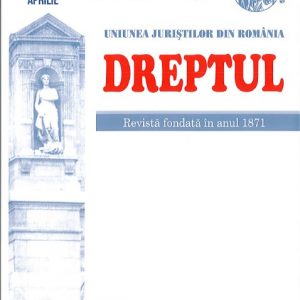 In the same way as the institutional decision-making system of the European Union (the European Commission, the Council, the European Parliament) participating in the unional legislative mechanism (the procedures of adoption of the derived legislation of the European Union) has undergone, in an evolutive sense, permanent changes of reformatory nature, in favour of some elements specific to bicameralism (the Council – the European Parliament; the European Parliament – the Council), within the institutions that make up the jurisdictional system of the European Union we are also witnessing the same permanence of the concerns for institutional reform placed in the structural-organizational plan, but also in the one of the competences ratione materiae, ratione personae. All these occurred and still occur in close relation to the process of enlargement of the European Union, as well as to the multiplication of the areas which fall under the exclusive competences of the European Union and of those shared between the European Union and the Member States, correlated with the principles of subsidiarity, proportionality, conferral and loyal cooperation.
In the same way as the institutional decision-making system of the European Union (the European Commission, the Council, the European Parliament) participating in the unional legislative mechanism (the procedures of adoption of the derived legislation of the European Union) has undergone, in an evolutive sense, permanent changes of reformatory nature, in favour of some elements specific to bicameralism (the Council – the European Parliament; the European Parliament – the Council), within the institutions that make up the jurisdictional system of the European Union we are also witnessing the same permanence of the concerns for institutional reform placed in the structural-organizational plan, but also in the one of the competences ratione materiae, ratione personae. All these occurred and still occur in close relation to the process of enlargement of the European Union, as well as to the multiplication of the areas which fall under the exclusive competences of the European Union and of those shared between the European Union and the Member States, correlated with the principles of subsidiarity, proportionality, conferral and loyal cooperation. -
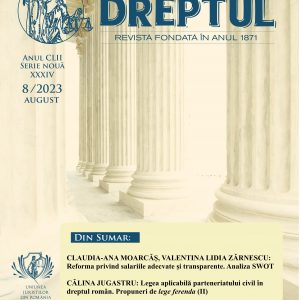
-
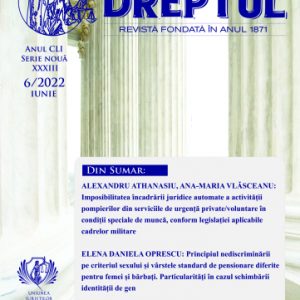 The present research intends to analyze the issue of certification of the European Enforcement Orders from the perspective of the regulation provided for in Regulation (EC) No 805/2004 of the European Parliament and of the Council of 21 April 2004 creating a European Enforcement Order for uncontested claims, from the perspective of the provisions of the Romanian Civil Procedure Code and also from the perspective of recent European and national case law in the matter. Therefore, the study aims to analyze the object, the scope of application, as well as the certification conditions of the European Enforcement Orders. In order to elaborate the study, there will be analyzed with priority the current European and national legislative provisions, the specialized doctrine, and also the relevant case law in the matter.
The present research intends to analyze the issue of certification of the European Enforcement Orders from the perspective of the regulation provided for in Regulation (EC) No 805/2004 of the European Parliament and of the Council of 21 April 2004 creating a European Enforcement Order for uncontested claims, from the perspective of the provisions of the Romanian Civil Procedure Code and also from the perspective of recent European and national case law in the matter. Therefore, the study aims to analyze the object, the scope of application, as well as the certification conditions of the European Enforcement Orders. In order to elaborate the study, there will be analyzed with priority the current European and national legislative provisions, the specialized doctrine, and also the relevant case law in the matter. -
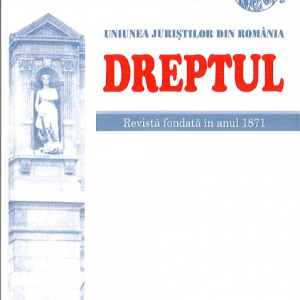
 Information technology changed the way we relate to information as any data posted on the Internet can remain accessible indefinitely. On the one hand this ease of access undoubtedly was beneficial for the freedom of expression and information, but on the other hand the fundamental right to privacy of natural persons seems under threat in the absence of an adequate legal mechanism that would ensure that their past will not haunt them ad vitam aeternam. Last year, the French Council of State has requested the European Court of Justice (ECJ) for a preliminary ruling on the territorial scope of the right to be digitally forgotten. Although, since the Google Spain case, EU citizens enjoy an online right to be forgotten, its territorial application is yet to be determined. As such, this paper discusses the Opinion of the Advocate General in the Google Case (C-507/17), opinion which could offer a glimpse into the future ruling of the ECJ on this matter. In our analysis, we will also show the reasons why the ECJ’s decision is only a step in defining the right to digital oblivion, not at all an end point.
Information technology changed the way we relate to information as any data posted on the Internet can remain accessible indefinitely. On the one hand this ease of access undoubtedly was beneficial for the freedom of expression and information, but on the other hand the fundamental right to privacy of natural persons seems under threat in the absence of an adequate legal mechanism that would ensure that their past will not haunt them ad vitam aeternam. Last year, the French Council of State has requested the European Court of Justice (ECJ) for a preliminary ruling on the territorial scope of the right to be digitally forgotten. Although, since the Google Spain case, EU citizens enjoy an online right to be forgotten, its territorial application is yet to be determined. As such, this paper discusses the Opinion of the Advocate General in the Google Case (C-507/17), opinion which could offer a glimpse into the future ruling of the ECJ on this matter. In our analysis, we will also show the reasons why the ECJ’s decision is only a step in defining the right to digital oblivion, not at all an end point. -
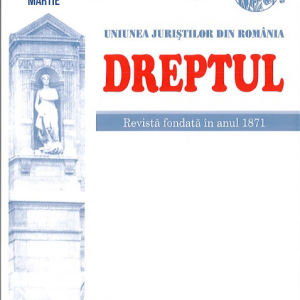 The social reality governed by the labour law has known a series of mutations, caused by economic and circumstantial factors, which may have an impact on the object itself of this branch of law. This paper aims to present these amendments, as well as some theories formulated in the Romanian and foreign legal literature on the future of the labour law and of its object. It is pointed out the danger of dissolution of the labour law, following to be later configured a series of options concerning the extent of protection offered by the labour law and its relation to other branches of law.
The social reality governed by the labour law has known a series of mutations, caused by economic and circumstantial factors, which may have an impact on the object itself of this branch of law. This paper aims to present these amendments, as well as some theories formulated in the Romanian and foreign legal literature on the future of the labour law and of its object. It is pointed out the danger of dissolution of the labour law, following to be later configured a series of options concerning the extent of protection offered by the labour law and its relation to other branches of law. -
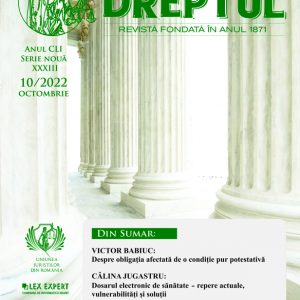 The loss of the chance to obtain an advantage or to avoid a damage represents a new form of reparation of prejudice regulated by the Civil Code, enshrined by the provisions of Article 1385 (4) of the Civil Code, and represents a distinct category of prejudice reparable by engaging in tort civil liability, which concerns those negative consequences directly caused by the commission of an illegal act that consist in missing the real and serious possibility of the occurrence of a favourable event for the victim’s life, which could have brought him fulfilment in his personal or economic life by the carrying out of some projects. Therefore, the loss of a chance means the loss by a person of the possibility to achieve a gain or, as the case may be, to avoid a damage, which may result in causing a prejudice to that person. De lege lata, we mention that the prejudice caused by the „loss of the chance to obtain an advantage” can be invoked within the framework of tort (extra-contractual) civil liability, but also in the field of contractual civil liability whenever by the non-fulfilment of the legal or contractual obligations such consequences have occurred. This prejudice could be claimed both by the direct victim of an illegal act and by those close to them if they prove that they suffered, through ricochet, such a prejudice. In order to have a reparable prejudice, the chance of occurrence of the favourable event for the victim must be as real as it is serious, which is assessed differently, whether or not the victim was in the process of taking the chance at the time when the event that compromised the possibility to achieve it occurred, and this prejudice must be in a direct causal link with the illegal act committed by the responsible person. The assessment of the chance shall be carried out in relation with two criteria, namely the examination of the circumstances in which the illegal act was committed, on the one hand, and the special situation in which the victim was at that time, on the other hand. With regard to the features of the prejudice, we specify that it must be certain (certain, unquestionable) and real (undeniable, effective, indisputable), and not an eventual one (possible, probable), the loss, therefore, must be actual.
The loss of the chance to obtain an advantage or to avoid a damage represents a new form of reparation of prejudice regulated by the Civil Code, enshrined by the provisions of Article 1385 (4) of the Civil Code, and represents a distinct category of prejudice reparable by engaging in tort civil liability, which concerns those negative consequences directly caused by the commission of an illegal act that consist in missing the real and serious possibility of the occurrence of a favourable event for the victim’s life, which could have brought him fulfilment in his personal or economic life by the carrying out of some projects. Therefore, the loss of a chance means the loss by a person of the possibility to achieve a gain or, as the case may be, to avoid a damage, which may result in causing a prejudice to that person. De lege lata, we mention that the prejudice caused by the „loss of the chance to obtain an advantage” can be invoked within the framework of tort (extra-contractual) civil liability, but also in the field of contractual civil liability whenever by the non-fulfilment of the legal or contractual obligations such consequences have occurred. This prejudice could be claimed both by the direct victim of an illegal act and by those close to them if they prove that they suffered, through ricochet, such a prejudice. In order to have a reparable prejudice, the chance of occurrence of the favourable event for the victim must be as real as it is serious, which is assessed differently, whether or not the victim was in the process of taking the chance at the time when the event that compromised the possibility to achieve it occurred, and this prejudice must be in a direct causal link with the illegal act committed by the responsible person. The assessment of the chance shall be carried out in relation with two criteria, namely the examination of the circumstances in which the illegal act was committed, on the one hand, and the special situation in which the victim was at that time, on the other hand. With regard to the features of the prejudice, we specify that it must be certain (certain, unquestionable) and real (undeniable, effective, indisputable), and not an eventual one (possible, probable), the loss, therefore, must be actual. -
 The study addresses the issue related to the offence of family abandonment, in the version provided by Article 378 (3) c) of the Criminal Code, which consists in the non-payment, in bad faith, for 3 months, of the support pension established in court. In particular, the aim is to clarify the meaning of the phrase „committing the act”, designated as indicating the moment when the time limit from which the period for filing the preliminary complaint begins to run, as the legislator has chosen to exempt this offence from the principle of compulsoriness of setting in motion the criminal action. The conclusions reached are in the sense that the phrase „committing the act” implies nuances in the matter of continued offence, as it is the one of family abandonment, otherwise the solution being one that would implicitly modify the content of Article 296 of the Criminal Procedure Code.
The study addresses the issue related to the offence of family abandonment, in the version provided by Article 378 (3) c) of the Criminal Code, which consists in the non-payment, in bad faith, for 3 months, of the support pension established in court. In particular, the aim is to clarify the meaning of the phrase „committing the act”, designated as indicating the moment when the time limit from which the period for filing the preliminary complaint begins to run, as the legislator has chosen to exempt this offence from the principle of compulsoriness of setting in motion the criminal action. The conclusions reached are in the sense that the phrase „committing the act” implies nuances in the matter of continued offence, as it is the one of family abandonment, otherwise the solution being one that would implicitly modify the content of Article 296 of the Criminal Procedure Code. -

